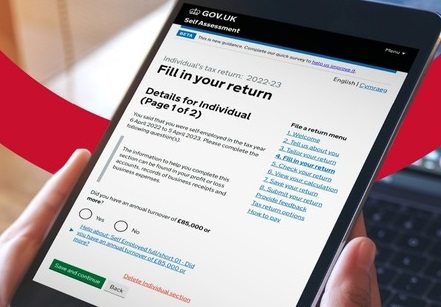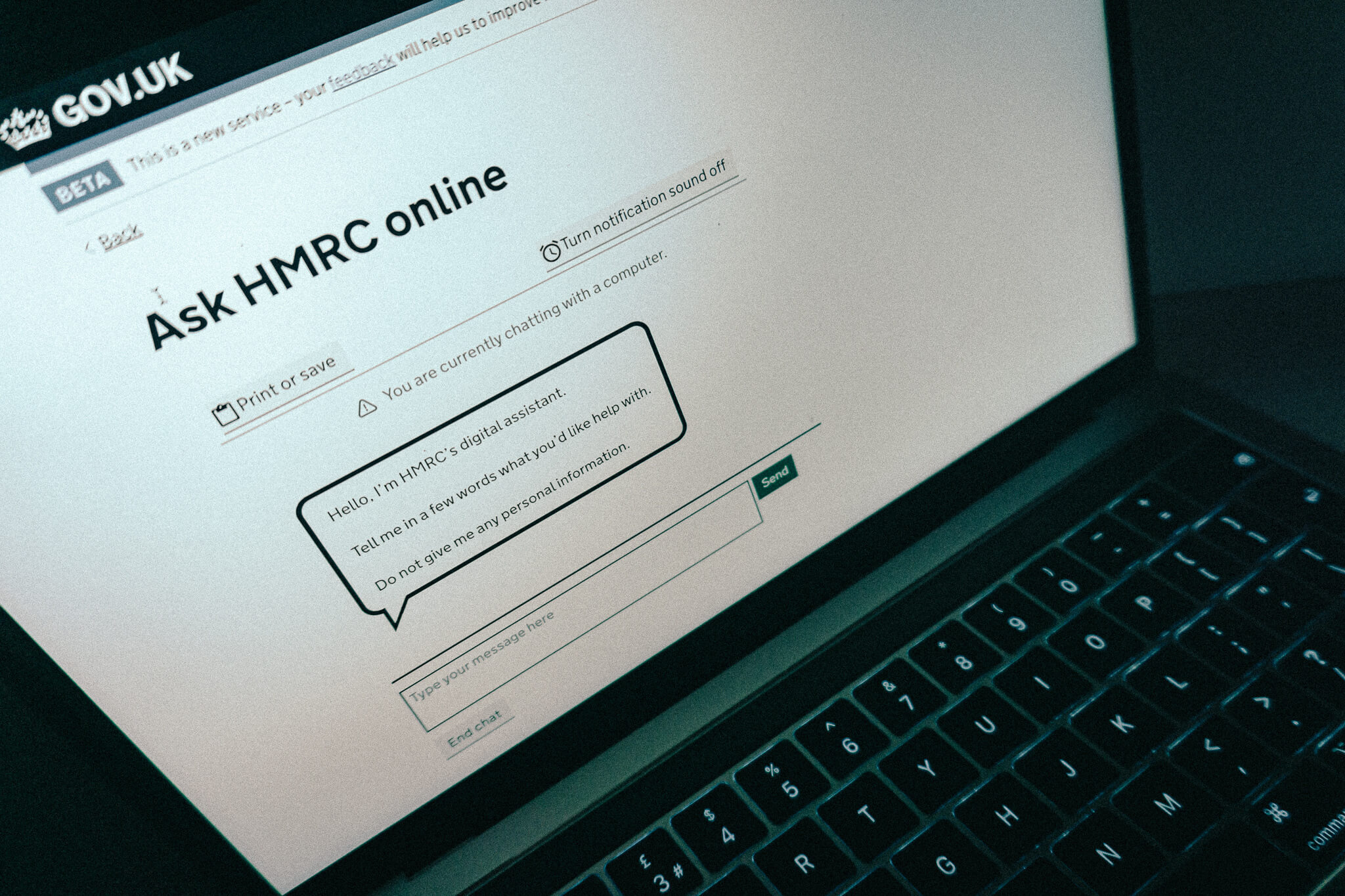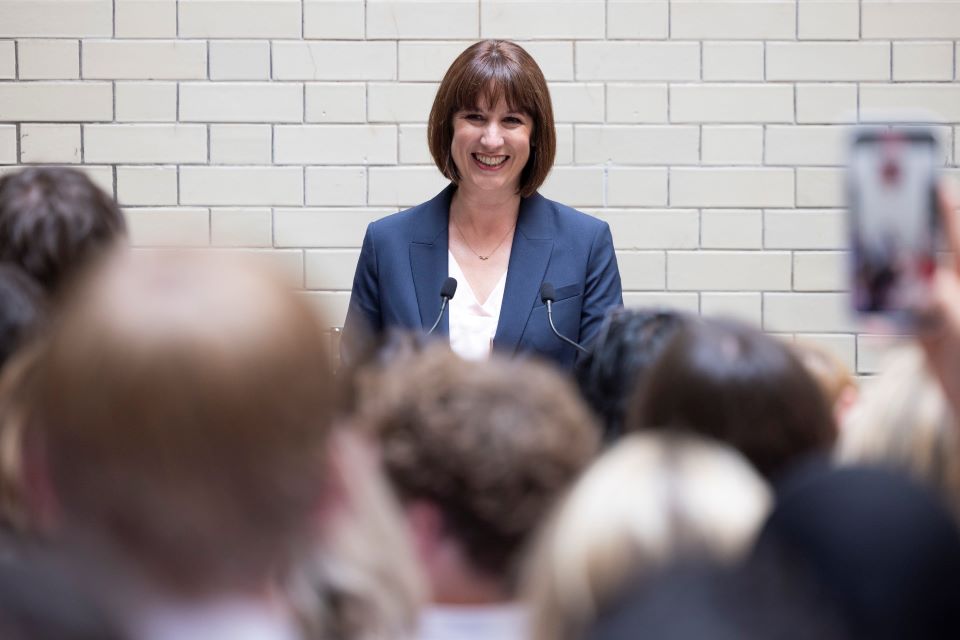PublicTechnology talks to chief digital product officer Sarah McMann, who discusses the burgeoning use of chatbots and automated voice platforms, and plans to increase functionality of HMRC’s highly rated app
Keeping customers happy is a perpetual challenge for any organisation.
The task is surely particularly tough if your customer base encompasses the majority of the population – and if their transactions require them to hand over large sums of money and receive nothing in return.
While people and businesses are unlikely to jump for joy every time they pay tax, HM Revenue and Customs – in alignment with a broader department-wide transformation – is trying to make the experience of doing so as painless as possible. Perhaps even pleasant.
To do so, the tax agency is striving not just to improve – and increase adoption of – its self-serve digital platforms, but is also ramping up its use of sophisticated automation and analytics tools to better intuit users’ needs, and meet them.
Sarah McMann is the department’s chief digital product officer, a role in which she oversees the IT platforms that underpin all HMRC’s interactions with customers via the provision of tax services for businesses and individuals, as the well as the department’s services in the areas of debt-management, benefits, and the work of Valuation Office Agency.
“There’s tens and tens of services and hundreds of products that that sit under that,” she says.
“I would like to be in a state where customers do not have to contact us, but can access information as and when they need it – allowing customers to get their tax right – and it’s just a thing that happens rather than something that customers have to be concerned about.”
Upon joining the tax agency almost five years ago, McMann found that the various means through which citizens interacted with HMRC – including online services, telephony, post, and a dedicated mobile app – were “really fragmented”. This negatively impacted both service users and the department.
“We tended to build something for web services, then rebuild on mobile app, and then have to rebuild the journeys in telephony,” she says. “Customer experience wasn’t great; if you were visiting the web but couldn’t find the answer, you’d have to ring up and repeat your journey all over again.”
The digital chief had been charged with replacing an outgoing contact-centre infrastructure but, before doing so, instigated a review of customer interactions over a period of six months.
“We ingested about 80 million rows of data to understand not only why customers were contacting us, but the intent behind that – because, quite often, we may be the cause of that contact, [because of] a letter that we’ve sent out. And that really helped us to understand where the pain points were in the journeys, understand the channels that customers were visiting – and why they were visiting – and then also the fallout. And that really informed our strategy… in terms of the components that we needed to bring in to manage a customer’s journey end to end and make it as seamless as possible – [while] driving more digital adoption and containment, and also improving the customer experience.”
A key part of this strategy was introducing low-code or no-code technologies – which are designed to allow non-technical staff to design or amend software applications. The use of these platforms allows officials in individual areas of the business to make reactive changes to the messages given via automated systems such as the interactive voice response technology that greets callers to HMRC helplines, or text message-based “deflections” that offer pointers intended to help users independently access information or services online.
HMRC’s array of service-delivery customer-support channels are now much more joined up than they were when McMann joined, but the department is currently only able to track user journeys retrospectively, she says. Over the next six months or so, via the department’s Customer Engagement Data and Reporting platform, it hopes to be reach a point where it is able to “use data in real time… to then determine the treatments for the customer”.
“What we are doing with it at the moment stitching that data together [retrospectively] in order to inform the roadmaps of where we need to focus next – and how do we measure through A/B testing that that we’ve had the effect that we were we were aiming for?,” she adds.
One outcome HMRC is aiming for is to ensure customers are able to complete interactions independently and digitally, where possible, without requiring additional support. Common barriers to doing so identified by the department include difficulty for uses in finding the info or service they are looking for online, as well as a lack of awareness of the existence of HMRC’s digital services.
Analysis of data has also indicated that the process of authentication is a point at which many experience problems.
“If you’re in PAYE, it might just be a life event that happens every two three years that would require you to engage within HMRC. So, authentication for those types of customers can be quite problematic,” McMann says. “We are looking at how do we authenticate up or downstream – and low-code/no-code… linking in with the case-management and the back end systems allows us to do that.”
App for it
In the early years of transformation led by the Government Digital Service, the Cabinet Office-based unit clearly advised departments to develop mobile-friendly web services, rather than dedicated apps which it said were “rarely justified”.
This hardline stance has since softened significantly but, for much of the past 10 years, government’s tax department has been something of an outlier – having created its first mobile app in 2012, followed in 2016 by the launch of the first version of the core HMRC app as a front door for many of its digital services.
As of the end of 2022/23, the app has 2.3 million users – representing an increase of 700,000 over the course of the year. The program also boasts ratings of 4.7 and 4.8 on the Google and Apple app stores, respectively.
£5m
Amount saved by use of chatbots in Covid support services
60%
Proportion of users sent an SMSA deflection that did not need to contact HMRC for a week thereafter
2.3 million
Users of the HMRC app
4.8
HMRC app’s rating on Apple app store
780
Number of ‘customer intents’ addressed by chatbots
McMann adds that 97% of visitors to the app do not subsequently need to access another HMRC channel – something she describes as “an impressive stat, compared to what I have seen in the private sector”.
Citizens can currently use the app to manage their details and contact preferences, make self-assessment payments or claim tax refunds, as well as accessing details of income, benefits, money owed, tax codes, National Insurance numbers, taxpayer references and – in a recently added feature – employment history.
While the digital product leader acknowledges that not every service is suitable for delivery via the app, HMRC is continuing to add functionality and “tends to launch big features every couple of months”.
“We’re now systematically going through all of the services and intents for PAYE, self-assessment, National Insurance and Child Benefit,” she says. “So, there will be multiple services over the next six to 12 months that that will be launched in the income tax and the benefits space.”
Across both its telephony and digital channels, HMRC has sought to implement automated tools in recent years – including interactive voice response tools to triage calls to customer helplines and text-based chatbots to assist with online service users.
Conversational user interfaces (CUI) are now used across 15 HMRC content areas, covering the specificities of 780 “customer intents” – meaning the service, advice or outcome sought by the individual contacting the department. This includes a range of queries related to self-assessment income tax, PAYE, and National Insurance.

The use of virtual assistants in the online services through which HMRC delivered government’s Covid support programmes – including the furlough and the Self-Employment Income Support Schemes – helped many users find what they were looking for when they would otherwise have resorted to phoning an HMRC helpline. This delivered the department an estimated £5m in “cost-avoidance” savings, McMann says.
She says that chatbot-type systems can act as a “concierge” when a user first arrives at an HMRC website or online service.
“Trying to navigate and find relevant content we knew was a massive pain point with customers,” she said. “So that’s where we started: how do we use this capability to surface relevant information to a customer? And we did that in earnest, and proved its success – and, in Covid, it was a critical component for digital services.”
HMRC will also shortly undertake a pilot exercise – using Microsoft’s Nuance technology – to explore the use of generative AI in its use of chatbots.
“We will look at how we can use that to better improve the customer experience by analysing the intents [to provide] better responses,” McMann says.
In its contact centre, meanwhile, the tax agency has used automated IVR systems to help point users towards self-service digital service options. The technology is designed to deduce callers’ intent and, if a digital service is available, it offers to send an SMS message with a link to the where it can be accessed online.
“While they’re on the phone, they can click that URL and, if it is relevant, then they hang up,” McMann says. “And then we track whether that customer contacted us within the next seven days – which is our measure of contact resolution.”
A comfortable majority – 60% – of those sent a text pointing them towards an online service terminate their call to HMRC and do not need to contact the department again for at least a week. Once again, the digital leader says that this success rate compares favourably with other organisations and sectors.
“When I’ve deployed this in private-sector organisations we’ve tended to start off in the 20-25% range and then gradually build it up once we understand how relevant the content was,” McMann says. “So I think that 60% is a good foundation. But, obviously, we want to continue to improve on that as well – because we don’t want 40% to have to call us back.”
The tax agency’s burgeoning use of automation and enabling users to access self-service tools are steps towards a future in which the ultimate goal is to have a “cognitive decision engine” working at the front line of customer service delivery.
Such capability would be supported by a repository that gathers data in real time and provides it to a CRM-based system, which can then dictate how digital services interact with users.
The kind of chatbots – or conversational user interfaces – that McMann says the department used so effectively in administering Covid support programmes are already able to use analyse real-time data to inform their interactions with citizens.
“We’re systematically going through all of the services and intents for PAYE, self-assessment, National Insurance and Child Benefit – there will be multiple services in the HMRC app over the next six to 12 months that will be launched in the income tax and the benefits space.”
“Rather than just having a static [help] button for somebody to click on… there is intelligence behind that: if we see somebody hovering on the ‘X’ button… or if we see delays, it might be a good opportunity to proactively offer assistance,” McMann says. “At the moment, we will only offer the digital assistant in the event that there is a web chat agent to support – because what we don’t want to do is create a walled garden whereby we provide a virtual assistants that can’t answer the question – because then it’s just frustrating for customers. So we always make sure that, when we’re offering the CUI, that there is web chat availability to support… apart from those where we see a huge containment rate, because we’ve got the intent – or intents – perfected.”
Asked by PublicTechnology to set progress goals for the coming 12 months, McMann puts forward the ambitious objective that “I would like to see the eradication of post – because we ingest far too much paper and push far too much paper out”.
However they engage with the department, the overarching goal is to reach a point “where customers do not feel it’s a hardship to contact HMRC” – if they even need to get in touch at all.
“I would like to be in a state where customers do not have to contact us, but can access information as and when they need it – because the information that we’re providing or the services that we’re offering, allow customers to get their tax right – and it’s just a thing that happens rather than something that customers have to be concerned about.”





May I have information on the topic of your article?
Genesis Mia Lopez OnlyFans Mega Link Download
Free Only Fans Leaks ( Visit https://archiver.fans )
Mega Link Shop ( Visit https://archiver.fans )
Hola Bulma OnlyFans Mega Link Download ( Visit https://archiver.fans )
Bulma XO OnlyFans Mega Link Download
Rebecca J OnlyFans Mega Link Download ( Visit https://archiver.fans )
Its Lunar Liv OnlyFans Mega Link Download
Black Ass Jenny OnlyFans Mega Link Download
Only Fans Leaks Updates
3TB Only Fans Mega
Only Fans Leaks Free Download
Hot 4 Lexi OnlyFans Mega Link Download ( Visit https://archiver.fans )
Free Only Fans Leaks ( Visit https://archiver.fans )
Bulma XO OnlyFans Mega Link Download
I’d like to find out more? I’d love to find out more details.
Caaart OnlyFans Mega Link Download
Mulan Hernandez OnlyFans Mega Link Download ( Visit https://archiver.fans )
Buy Fansly Leaks ( Visit https://archiver.fans )
Buy Leaked Only Fans ( Visit https://archiver.fans )
Corinna Kopf OnlyFans Mega Link Download ( Visit https://archiver.fans )
I’d like to find out more? I’d love to find out more details.
벼룩시장 신문그대로보기 (구인구직, 부동산) 벼룩시장 신문그대로보기 바로가기 그리고 지역별 벼룩시장 종이신문그대로보기 방법 (구인구직, 부동산) 알아볼게요. 교차로신문 같이 벼룩시장은 지역별 일자리, 구인구직, 부동산 등 다양한 정보를 제공해요. 교차로신문그대로보기 바로가기는 아래에서 확인하고, 오늘은 벼룩시장 신문그대로보기 바로가기 그리고 사용법 섹스카지노사이트
Itz Grippy TV OnlyFans Mega Link Download ( Visit https://archiver.fans )
Mulan Hernandez OnlyFans Mega Link Download ( Visit https://archiver.fans )
Emmanuel Lustin OnlyFans Mega Link Download ( Visit https://archiver.fans )
Mikaila Dancer OnlyFans Mega Link Download
Fansly Leaks Mega Link
Updated Only Fans Leaks ( Visit https://archiver.fans )
TheRealRebeccaJ OnlyFans Mega Link Download
Buy Leaked Content ( Visit https://archiver.fans )
Mega Link Store
Corinna Kopf OnlyFans Mega Link Download ( Visit https://archiver.fans )
Hot 4 Lexi OnlyFans Mega Link Download ( Visit https://archiver.fans )
Corinna Kopf OnlyFans Mega Link Download ( Visit https://archiver.fans )
Hot 4 Lexi OnlyFans Mega Link Download ( Visit https://archiver.fans )
Please provide me with more details on the topic
Updated Only Fans Leaks ( Visit https://archiver.fans )
Only Fans Leaks Free Download
One more thing. I really believe that there are several travel insurance sites of trustworthy companies that allow you enter your holiday details and have you the insurance quotes. You can also purchase this international travel cover policy on the web by using your credit card. Everything you need to do is to enter the travel particulars and you can start to see the plans side-by-side. Just find the program that suits your capacity to pay and needs and use your bank credit card to buy the idea. Travel insurance online is a good way to start looking for a trustworthy company pertaining to international travel insurance. Thanks for revealing your ideas.
Buy Mega Links ( Visit https://archiver.fans )
Caaart OnlyFans Mega Link Download
Genesis Mia Lopez OnlyFans Mega Link Download
Daalischus Rose OnlyFans Mega Link Download
Black Ass Jenny OnlyFans Mega Link Download
Definitely believe that that you said. Your favorite reason appeared to be at the internet the simplest factor to be aware of. I say to you, I certainly get annoyed while people think about concerns that they just don’t understand about. You controlled to hit the nail upon the top and outlined out the whole thing without having side effect , other folks could take a signal. Will probably be again to get more. Thanks
Daalischus Rose OnlyFans Mega Link Download
Buy Mega Links ( Visit https://archiver.fans )
Crii Baby RiRi OnlyFans Mega Link Download ( Visit https://archiver.fans )
Emmanuel Lustin OnlyFans Mega Link Download ( Visit https://archiver.fans )
It’s appropriate time to make a few plans for the future and it’s time to be happy. I’ve learn this post and if I could I wish to suggest you few interesting issues or suggestions. Maybe you can write next articles regarding this article. I want to read more issues approximately it!
Buy Only Fans Leaks ( Visit https://archiver.fans )
Emmanuel Lustin OnlyFans Mega Link Download ( Visit https://archiver.fans )
Only Fans Leaks Free Download
Taylor Hall OnlyFans Mega Link Download
Buy Only Fans Leaks ( Visit https://archiver.fans )
Fansly Leaks Mega Link
TheRealRebeccaJ OnlyFans Mega Link Download
Only Fans Leaks Free Download
3TB Only Fans Mega
Caaart OnlyFans Mega Link Download
Lexi 2 Legit OnlyFans Mega Link Download
Buy Leaked Only Fans ( Visit https://archiver.fans )
North Natt OnlyFans Mega Link Download
3TB Only Fans Mega
I’ve learned quite a few important things by means of your post. I’d personally also like to state that there might be situation that you will have a loan and never need a co-signer such as a Government Student Support Loan. When you are getting a borrowing arrangement through a traditional creditor then you need to be prepared to have a co-signer ready to make it easier for you. The lenders will base their very own decision on a few variables but the greatest will be your credit standing. There are some creditors that will furthermore look at your work history and make up your mind based on this but in many instances it will be based on on your ranking.
Thanks for sharing superb informations. Your site is very cool. I’m impressed by the details that you have on this site. It reveals how nicely you understand this subject. Bookmarked this website page, will come back for extra articles. You, my friend, ROCK! I found simply the information I already searched all over the place and simply could not come across. What a great web site.
Buy Only Fans Leaks ( Visit https://archiver.fans )
GG With The WAP OnlyFans Mega Link Download
Barely Legal Lexi OnlyFans Mega Link Download
8TB Only Fans Mega ( Visit https://archiver.fans )
Buy Mega Links ( Visit https://archiver.fans )
North Natt OnlyFans Mega Link Download
Genesis Mia Lopez OnlyFans Mega Link Download
Ima Cri Baby OnlyFans Mega Link Download ( Visit https://archiver.fans )
North Natt OnlyFans Mega Link Download
Daalischus Rose OnlyFans Mega Link Download
One other important area is that if you are a senior, travel insurance for pensioners is something you need to really take into account. The more mature you are, the greater at risk you might be for getting something terrible happen to you while in another country. If you are not really covered by many comprehensive insurance plan, you could have some serious problems. Thanks for giving your suggestions on this website.
영등포안마살롱
Emmanuel Lustin OnlyFans Mega Link Download ( Visit https://archiver.fans )
Ima Cri Baby OnlyFans Mega Link Download ( Visit https://archiver.fans )
Bulma XO OnlyFans Mega Link Download
Only Fans Leaks Free Download
Buy Leaked Only Fans ( Visit https://archiver.fans )
Its Lunar Liv OnlyFans Mega Link Download
3TB Only Fans Mega
Buy Leaked Content ( Visit https://archiver.fans )
Only Fans Leaks Free Download
10TB Only Fans Mega ( Visit https://archiver.fans )
3TB Only Fans Mega
Buy Leaked Content ( Visit https://archiver.fans )
Leah Mifsud OnlyFans Mega Link Download ( Visit https://archiver.fans )
Hello! Do you use Twitter? I’d like to follow you if that would be okay. I’m undoubtedly enjoying your blog and look forward to new updates.
Rubi Rose OnlyFans Mega Link Download
One thing is that if you are searching for a student loan you may find that you will want a co-signer. There are many situations where this is true because you could find that you do not possess a past credit standing so the financial institution will require that you have someone cosign the financial loan for you. Interesting post.
Fansly Leaks Mega Link
Mikaila Dancer OnlyFans Mega Link Download
Do you mind if I quote a few of your articles as long as I provide credit and sources back to your website? My blog site is in the exact same area of interest as yours and my visitors would certainly benefit from some of the information you present here. Please let me know if this ok with you. Many thanks!
Caaart OnlyFans Mega Link Download
8TB Only Fans Mega ( Visit https://archiver.fans )
Its Lunar Liv OnlyFans Mega Link Download
Its Lunar Liv OnlyFans Mega Link Download
Hot 4 Lexi OnlyFans Mega Link Download ( Visit https://archiver.fans )
GG With The WAP OnlyFans Mega Link Download
Caaart OnlyFans Mega Link Download
Corinna Kopf OnlyFans Mega Link Download ( Visit https://archiver.fans )
8TB Only Fans Mega ( Visit https://archiver.fans )
Gina WAP OnlyFans Mega Link Download ( Visit https://archiver.fans )
Hola Bulma OnlyFans Mega Link Download ( Visit https://archiver.fans )
Emmanuel Lustin OnlyFans Mega Link Download ( Visit https://archiver.fans )
Hot 4 Lexi OnlyFans Mega Link Download ( Visit https://archiver.fans )
3TB Only Fans Mega
Buy Mega Links ( Visit https://archiver.fans )
very good submit, i definitely love this web site, keep on it
Bulma XO OnlyFans Mega Link Download
Mega Link Store
Bunz4Ever OnlyFans Leaks Mega Folder Link Download
Tytiania Sargent Porn ( https://UrbanCrocSpot.org/shop )
GinaWAP Free Only Fans https://urbancrocspot.org/tag/gg-with-the-wap/
GGWithTheWAP Only Fans Leaks https://urbancrocspot.org/product-tag/gg-with-the-wap/
Bombshell Mint OnlyFans Leaks ( https://urbancrocspot.org/the-real-bombshell-mint-only-fans-mega-link/ )
Tytiania Sargent Naked Only Fans ( https://UrbanCrocSpot.org/shop )
GinaWAP Mega Folder Link https://urbancrocspot.org/product-tag/gg-with-the-wap/
GGWithTheWAP Only Fans PPVs ( https://urbancrocspot.org/gina-wap-gg-with-the-wap-only-fans-mega-link-9gb/ )
GCupBaby OnlyFans Leaks Mega Folder Link Download ( https://UrbanCrocSpot.org )
BombshellMint ( https://UrbanCrocSpot.org/shop )
GGWithDaWAP Only Fans Leaks https://urbancrocspot.org/tag/gg-with-the-wap/
The Real Bombshell Mint ( https://urbancrocspot.org/the-real-bombshell-mint-only-fans-mega-link/ )
All Charged Up OnlyFans Leaks Mega Folder Link Download
GGWithTheWAP Only Fans Leaks https://urbancrocspot.org/product-tag/gg-with-the-wap/
Coming from my research, shopping for gadgets online can for sure be expensive, nonetheless there are some tips and tricks that you can use to help you get the best offers. There are constantly ways to locate discount specials that could help make one to possess the best electronic devices products at the smallest prices. Interesting blog post.
whoah this blog is wonderful i love reading your articles. Keep up the great work! You know, lots of people are hunting around for this info, you can aid them greatly.
https://download-install.com/entry/ECA780ED8FACEC8AA4-EC9DB5EC8AA4ED94BCEBA6ACEC96B8EC8AA4-EAB7B8EB9E98ED94BD-EB939CEB9DBCEC9DB4EBB284-EB8BA4EC9AB4EBA19CEB939C-EC9EACEC84A4ECB998
Really appreciate you sharing this post. Keep writing.
This particular is so helpful! The tip about using a financial tracker is a life-saver. I’ve been using one for a long time, and it’s made a huge difference. I also wrote a guide on the top tools to use, which might help your readers. Continue the great work!
https://dday.tistory.com/472
Fantastic article! The part on creating an emergency fund really connected with me. I’ve been following a comparable strategy, and it’s been a game-changer. I also created a no-cost tool to help figure out how much to save, which your readers might find useful. Well done!
Mexican Easy Pharm: Mexican Easy Pharm – Mexican Easy Pharm
I know this if off topic but I’m looking into starting my own blog and was curious what all is required to get set up? I’m assuming having a blog like yours would cost a pretty penny? I’m not very internet smart so I’m not 100 certain. Any recommendations or advice would be greatly appreciated. Kudos
Hey there, I think your website might be having browser compatibility issues. When I look at your website in Chrome, it looks fine but when opening in Internet Explorer, it has some overlapping. I just wanted to give you a quick heads up! Other then that, fantastic blog!
I’m curious to find out what blog system you are utilizing? I’m having some small security issues with my latest site and I would like to find something more risk-free. Do you have any recommendations?
Los casinos organizan noches de trivia divertidas.: winchile casino – win chile
https://tiptravel.tistory.com/59
The Philippines offers a rich gaming culture.: phmacao casino – phmacao casino
Visitors come from around the world to play.: taya777.icu – taya777.icu
winchile casino win chile Los jackpots progresivos atraen a los jugadores.
The gaming floors are always bustling with excitement.: phtaya.tech – phtaya.tech
Live dealer games enhance the casino experience.: taya365 login – taya365
Poker rooms host exciting tournaments regularly.: phmacao casino – phmacao com login
Many casinos have beautiful ocean views.: taya365 – taya365 login
Many casinos offer luxurious amenities and services.: phtaya – phtaya
jugabet chile jugabet.xyz Los torneos de poker generan gran interГ©s.
Many casinos have beautiful ocean views.: taya365 login – taya365 com login
Slot tournaments create friendly competitions among players.: phmacao casino – phmacao club
Las estrategias son clave en los juegos.: winchile.pro – winchile
jugabet jugabet Hay reglas especГficas para cada juego.
High rollers receive exclusive treatment and bonuses.: taya365.art – taya365.art
Live music events often accompany gaming nights.: phtaya – phtaya login
phmacao casino phmacao club The ambiance is designed to excite players.
La historia del juego en Chile es rica.: jugabet chile – jugabet casino
The Philippines offers a rich gaming culture.: phtaya – phtaya
phmacao com phmacao com login The casino scene is constantly evolving.
Gaming regulations are overseen by PAGCOR. http://phtaya.tech/# Poker rooms host exciting tournaments regularly.
https://doxbin.org/upload/JayceBradfordChildPredatorCPConnoisseur
The ambiance is designed to excite players.: taya365 com login – taya365 com login
La Г©tica del juego es esencial.: win chile – winchile
phtaya login phtaya.tech Many casinos provide shuttle services for guests.
Security measures ensure a safe environment.: phtaya – phtaya login
Gaming regulations are overseen by PAGCOR. http://jugabet.xyz/# La adrenalina es parte del juego.
The gaming floors are always bustling with excitement.: taya365 com login – taya365
phtaya login phtaya Live dealer games enhance the casino experience.
Players enjoy a variety of table games.: phtaya casino – phtaya
phtaya casino phtaya login Slot machines feature various exciting themes.
Los juegos de mesa son clГЎsicos eternos.: jugabet chile – jugabet casino
High rollers receive exclusive treatment and bonuses. http://winchile.pro/# Las experiencias son Гєnicas en cada visita.
pet meds without vet prescription canada: easy canadian pharm – easy canadian pharm
https://klero.tistory.com/tag/V앱20영상20저장
online pharmacy delivery usa: Online pharmacy USA – online pharmacy no prescription
discount drug mart drug mart discount drug pharmacy
canadian pharmacy meds: canadian drugstore online – canada drugs online reviews
easy canadian pharm easy canadian pharm buying drugs from canada
mexican rx online: xxl mexican pharm – xxl mexican pharm
discount drug mart: discount drugs – drug mart
buying prescription drugs from canada https://discountdrugmart.pro/# discount drug mart pharmacy
easy canadian pharm easy canadian pharm vipps approved canadian online pharmacy
canadian pharmacy no prescription needed: Cheapest online pharmacy – Cheapest online pharmacy
MegaIndiaPharm: MegaIndiaPharm – Mega India Pharm
cheapest pharmacy for prescriptions without insurance http://xxlmexicanpharm.com/# mexican rx online
pharmacy no prescription required discount drug pharmacy discount drugs
drug mart: discount drugs – discount drug mart pharmacy
https://blog.naver.com/vckse2ks/223715140515
Cheapest online pharmacy: Best online pharmacy – Online pharmacy USA
xxl mexican pharm mexican drugstore online п»їbest mexican online pharmacies
legal online pharmacy coupon code https://megaindiapharm.shop/# Mega India Pharm
Mega India Pharm: world pharmacy india – indian pharmacy
online pharmacy no prescription needed drugmart drugmart
discount drug pharmacy: cheapest pharmacy for prescriptions without insurance – discount drugs